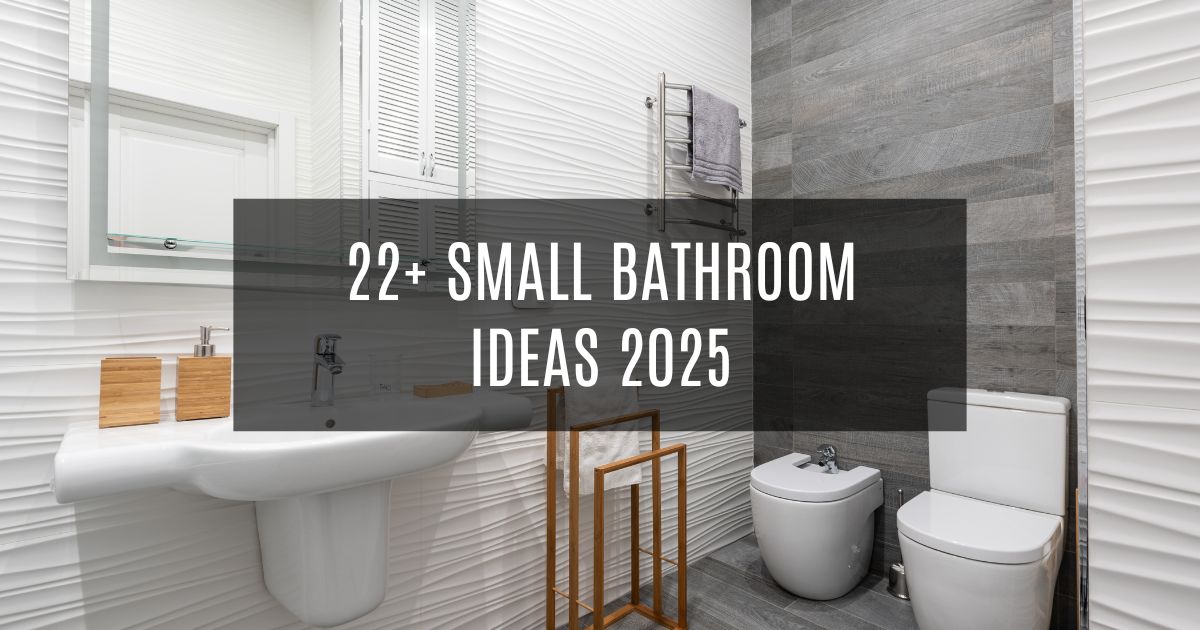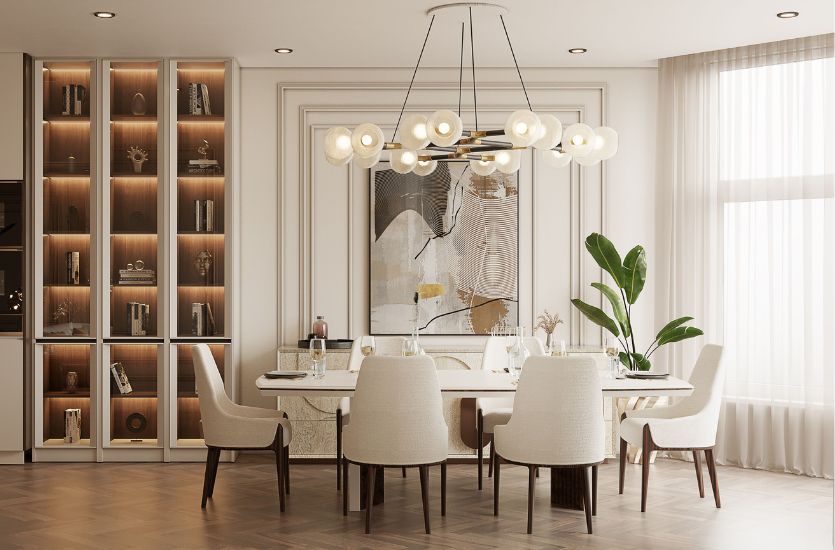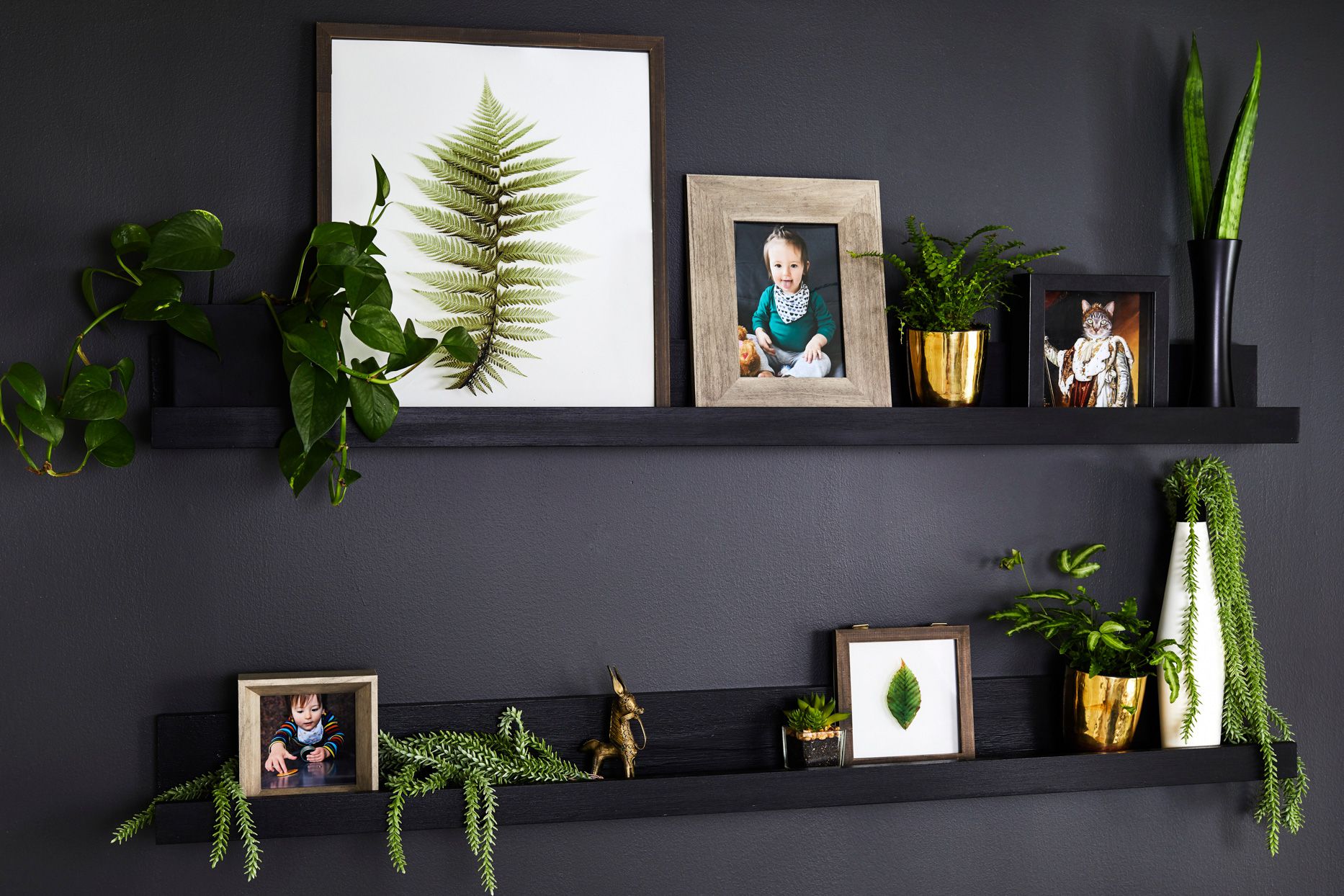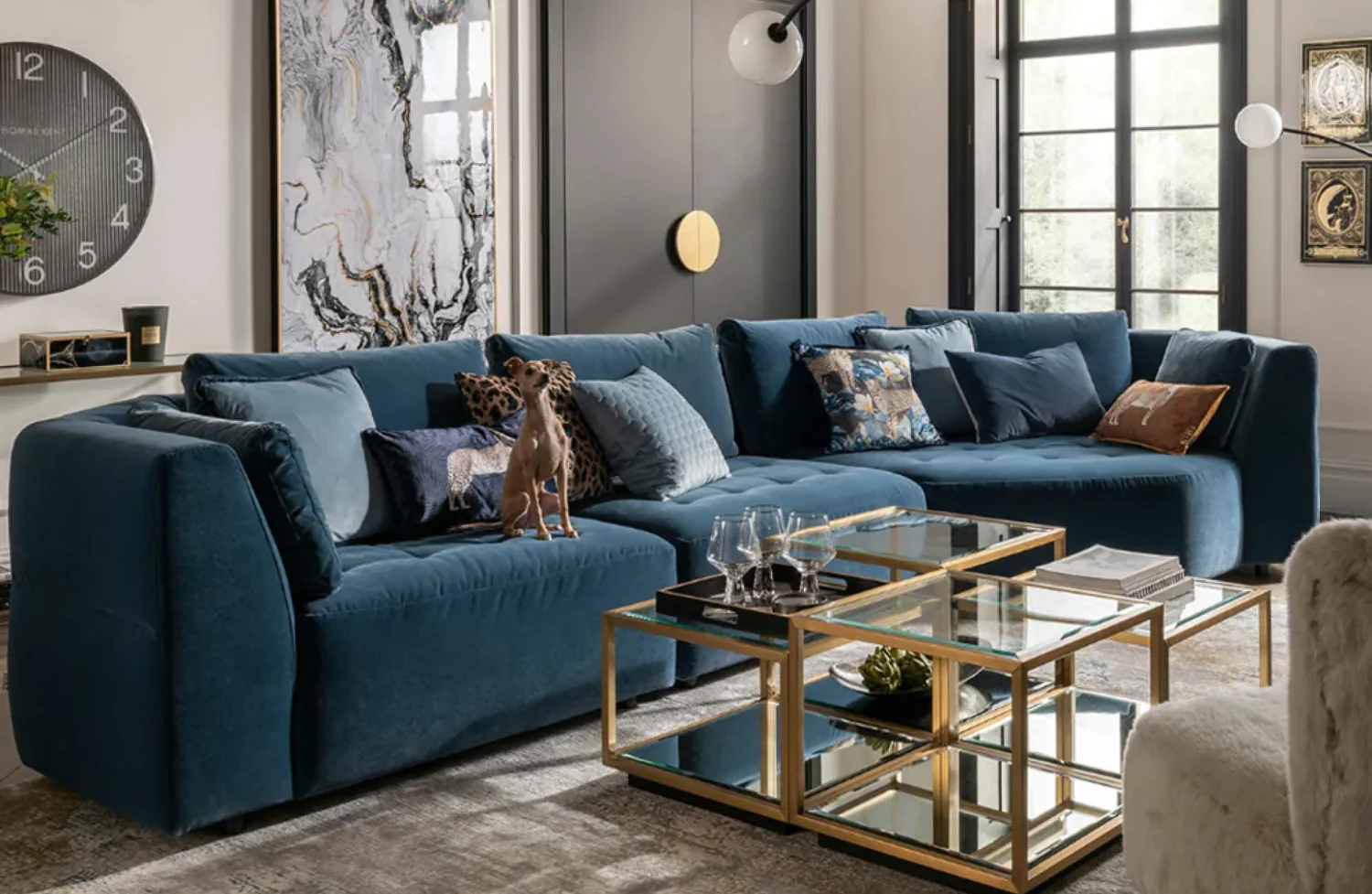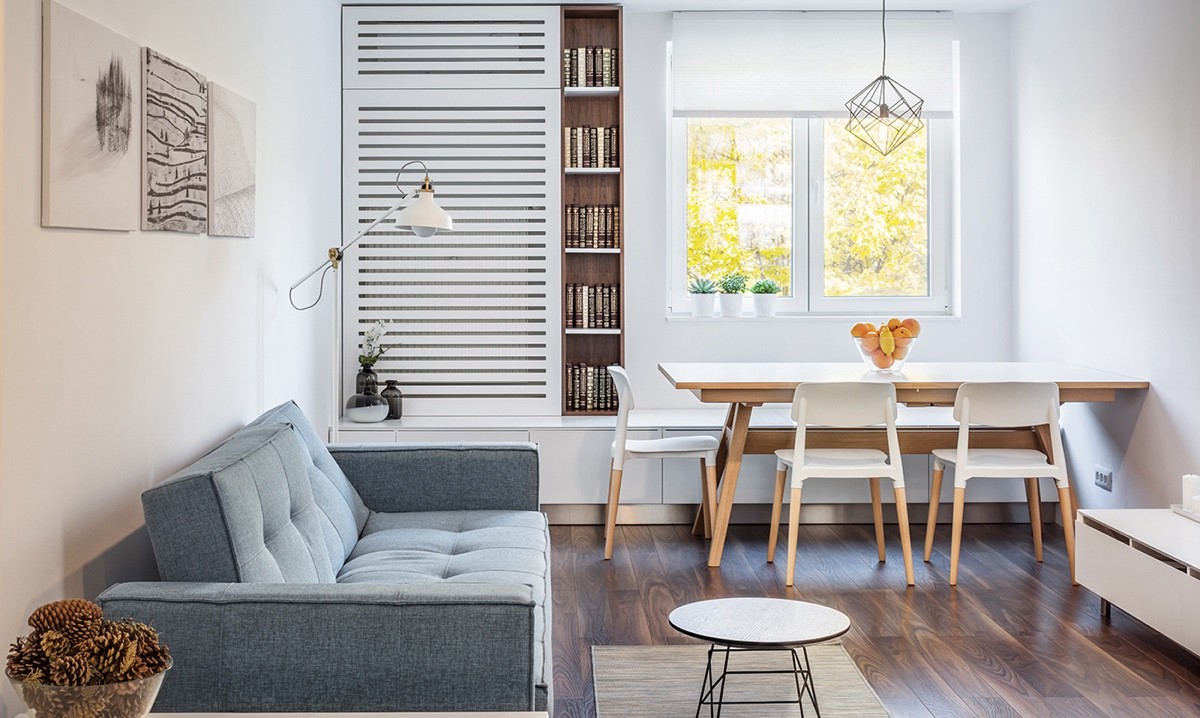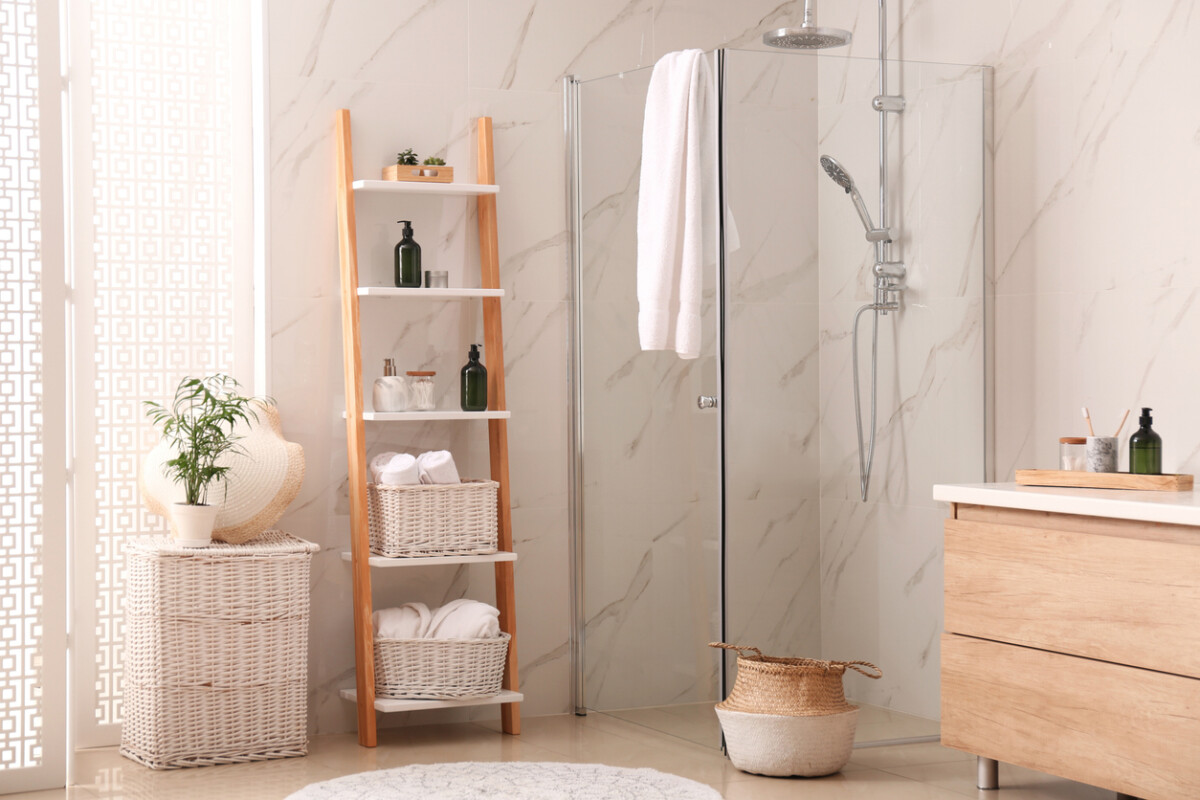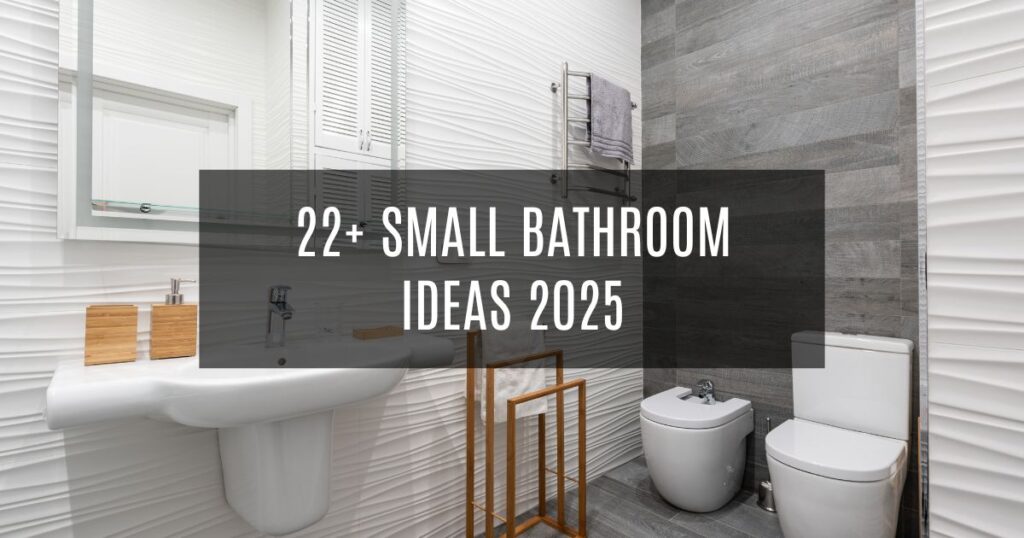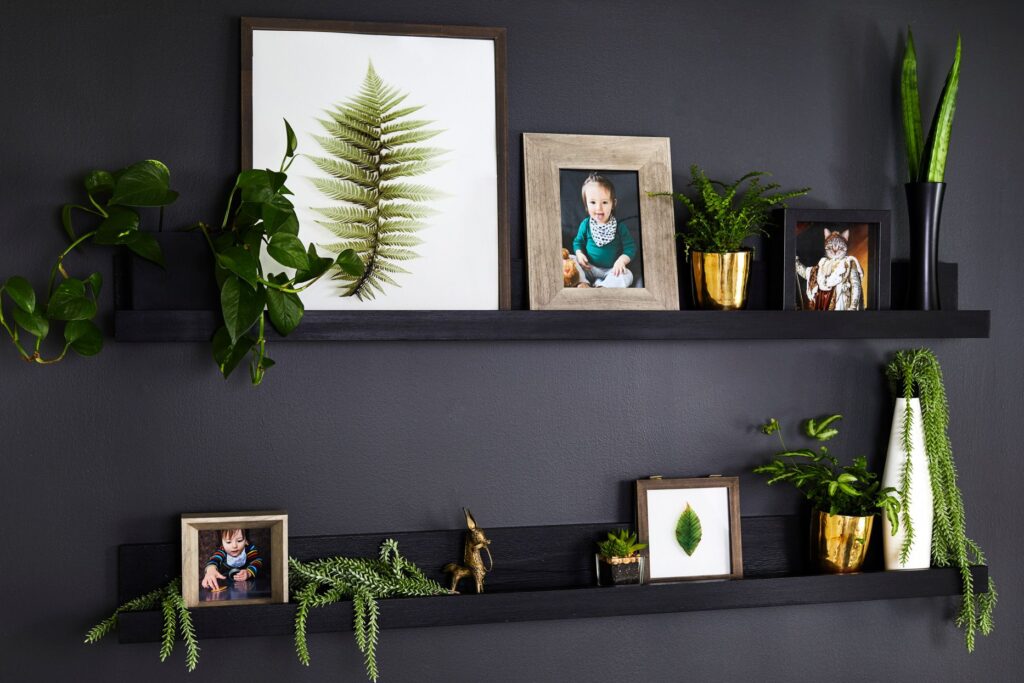If your dining room feels cramped, cluttered, or just uninspiring, it might be time to embrace the beauty of minimalism. Minimalist dining spaces are more than just a trend—they offer a lifestyle that values simplicity, clarity, and functionality. And the best part? Minimalism doesn’t mean boring. In fact, when done right, a minimalist dining room can feel warm, inviting, and incredibly stylish.
You don’t need a massive budget or a professional designer to transform your space. By focusing on clean lines, thoughtful design, and intentional décor choices, you can create a space that feels serene and effortlessly elegant. Whether you’re decorating a small apartment or refreshing a spacious family home, minimalism adapts beautifully to every setting.
This design approach strips away the unnecessary, allowing your dining room’s best features to shine—be it natural light, a beautiful table, or the cozy atmosphere you create. It’s not just about having less; it’s about making room for more meaningful moments—family dinners, heartfelt conversations, and peaceful mornings over coffee.
In this article, you’ll discover 20 inspiring, real-life ideas to bring minimalist charm into your dining room. From sleek Scandinavian vibes to warm, earthy tones, each idea is crafted to help you reimagine your space without overwhelming it. Get ready to fall in love with clean, functional, and absolutely beautiful design.
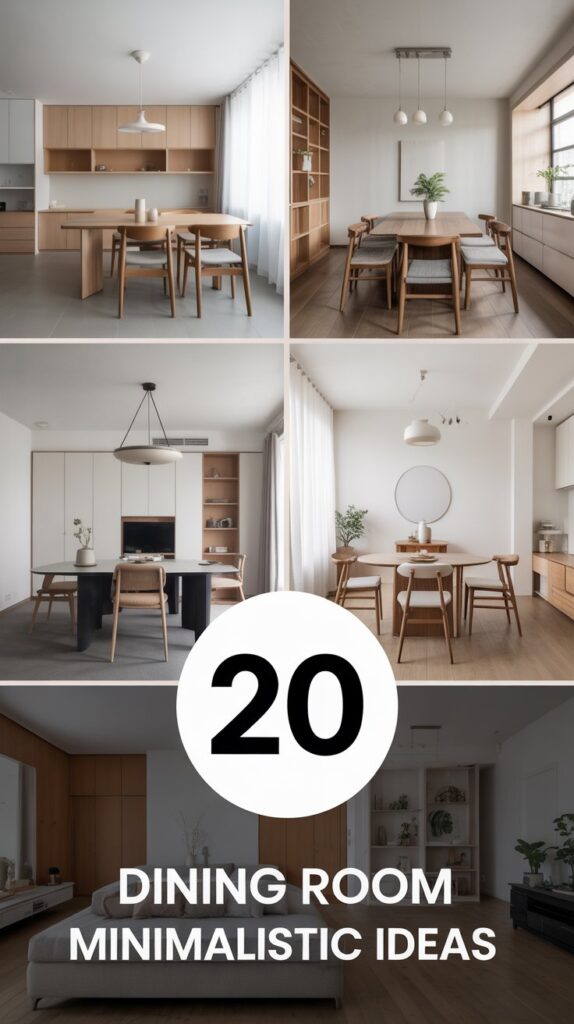
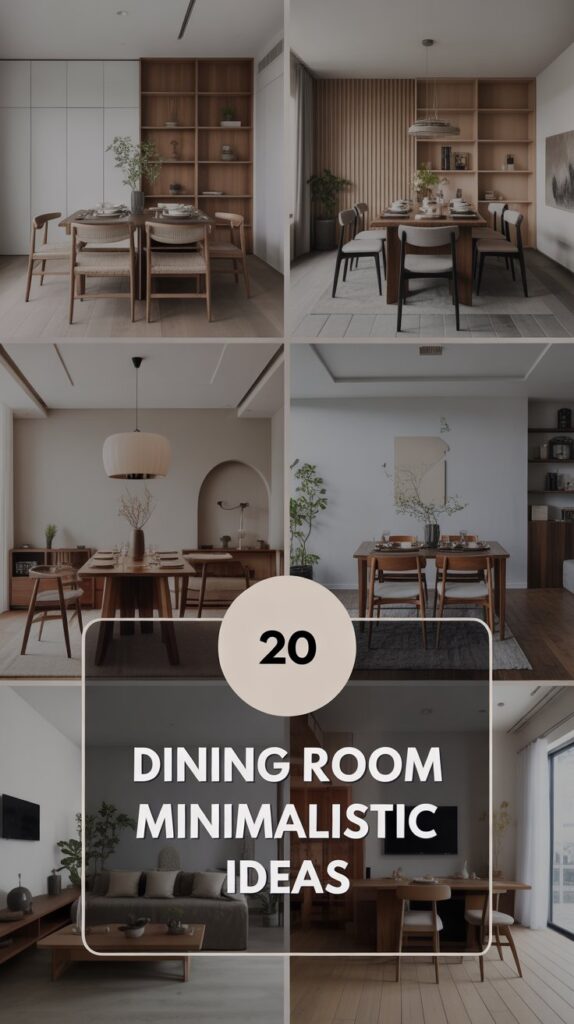
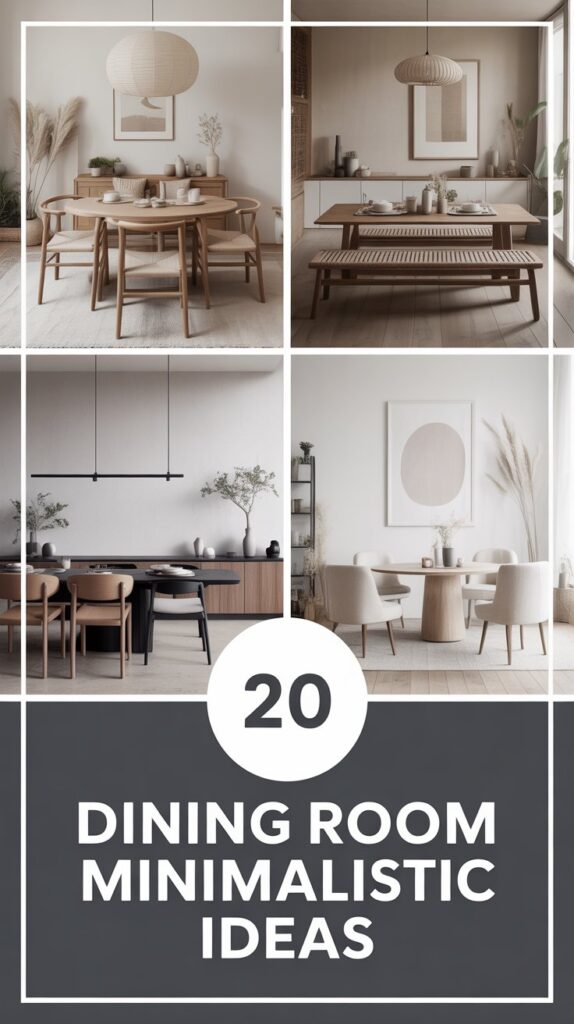

Let’s dive into the most creative and refreshing ways to make your dining room feel lighter, brighter, and more intentional.
Table of Contents
- 20 Dining Room Minimalistic Ideas
- Scandinavian Simplicity
- Black and White Contrast
- Japandi Fusion
- Monochrome Magic
- Raw Wood Charm
- Floating Shelves and Open Space
- Statement Lighting Only
- Invisible Storage Solutions
- Glass Table Elegance
- Natural Light Focus
- Neutral Toned Layers
- Art as a Focal Point
- Concrete and Industrial Touches
- Minimal Farmhouse Style
- Foldable or Expandable Furniture
- White on White Palette
- Bench Seating Simplicity
- Minimalist Round Table Setup
- Accent Wall with Texture
- One Green Plant Rule
- FAQs
- Conclusion
20 Dining Room Minimalistic Ideas
Think light woods, crisp whites, and cozy textures. A Scandinavian-style dining room keeps things minimal but never cold. Pair a simple wooden table with molded white chairs, and let natural light flood the space through bare windows or soft linen curtains. Use soft pendant lighting and add a neutral rug to bring in warmth. Keep wall décor minimal—maybe one framed abstract print or a small shelf with organic ceramics. This style balances minimalism with hygge-inspired comfort.
Black and White Contrast
A black-and-white palette brings drama and clarity to a minimalist dining space. Keep furniture lines sharp and straightforward—like a matte black dining table with white upholstered chairs. Consider a black statement light fixture to create a focal point overhead. To keep it from feeling too stark, layer textures: a shaggy rug, soft drapes, or a ceramic centerpiece. The contrast is bold, but the overall look remains clean and cohesive.
Japandi Fusion
Japandi—a mix of Japanese and Scandinavian design—brings calm and grounded energy. Use low-profile furniture, natural materials like bamboo or oak, and muted earth tones. Choose simple dishware and decorate with a single bonsai or a stone vase. The key here is intentionality—every item should serve a purpose or bring visual calm. This style is ideal if you want a peaceful dining space that doubles as a retreat.
Monochrome Magic
Stick to one color family—think all shades of beige, grey, or soft green—to create visual unity. This doesn’t mean your space will be flat. Mix textures instead: pair linen curtains with a concrete table and velvet chairs. Add interest through subtle variations in shade and tone. A monochrome palette feels expansive and quiet, perfect for minimalist lovers who still want a layered aesthetic.
Raw Wood Charm
Let raw, unfinished wood take center stage. A solid wood table with visible grain makes a bold statement without needing any extras. Pair it with simple bench seating or spindle-back chairs in matching tones. Keep accessories to a minimum—perhaps a bowl of seasonal fruit or a slim vase with dried grass. This look embraces imperfection and nature’s texture, bringing warmth to minimalism.
Floating Shelves and Open Space
Rather than cluttering your dining room with bulky furniture, use floating shelves for both form and function. Display a few beautiful, everyday items—ceramic bowls, glass jars, or a small plant. Floating shelves keep your space open and airy while still offering storage and styling opportunities. Keep walls and floors clear to highlight the simplicity.
Statement Lighting Only
Let your light fixture be the star. Whether it’s a sculptural pendant, minimalist chandelier, or oversized globe, choose a fixture that draws the eye without needing much else. Keep the rest of the room pared down—simple table, neutral chairs, bare walls. This works especially well in dining rooms with high ceilings or centered layouts.
Invisible Storage Solutions
Minimalist doesn’t mean impractical. Opt for built-in cabinets that blend into the wall or slim sideboards with handleless drawers. These pieces keep clutter out of sight while maintaining a sleek appearance. Stick with neutral colors or finishes that match the wall color to create a seamless effect. It’s a smart way to stay organized without disrupting the aesthetic.
Glass Table Elegance
A glass dining table reflects light and gives the illusion of more space—ideal for small dining rooms. Pair it with minimalist metal or acrylic chairs for a light, airy feel. Keep the surrounding décor simple so the table remains the focal point. This look is modern, stylish, and feels like it’s floating in the room.
Natural Light Focus
Sometimes, the best décor is light itself. Design your dining area to highlight natural light—use sheer curtains, avoid heavy furniture near windows, and choose light-reflecting finishes like gloss or glass. Place your table where sunlight can spill across it during the day. It makes mealtime feel more serene and energizing.
Neutral Toned Layers
Layering neutrals is an art in minimalist interiors. Choose a warm white wall, light oak furniture, beige or oatmeal linen, and cream-toned ceramics. The key is subtle contrast—nothing too sharp, just soft, harmonious layers. This kind of room invites you in without overwhelming your senses.
Art as a Focal Point
In minimalist spaces, one bold piece of art can replace an entire wall gallery. Opt for a large, unframed canvas or black-and-white photograph. Keep everything else in the room subdued so the artwork can speak. It becomes a conversation piece without adding clutter.
Concrete and Industrial Touches
Concrete is a bold, beautiful minimalist material. A concrete dining table or floor paired with soft textiles like wool or linen strikes the perfect balance. Industrial-style lighting or metal chairs can complete the look. This aesthetic works best in urban lofts or modern homes and adds an edge to simplicity.
Minimal Farmhouse Style
Yes, farmhouse and minimalism can coexist. Think reclaimed wood tables with crisp white surroundings, vintage-style chairs, and a few carefully chosen antique accessories. Avoid excess—one weathered centerpiece is enough. The result is warm, lived-in, but still clean and understated.
Foldable or Expandable Furniture
Minimalist design is about adaptability. Use foldable chairs, extendable tables, or nesting furniture to maximize space without permanent clutter. Choose pieces that look elegant even when stowed away. Ideal for small homes or apartments where the dining area serves multiple purposes.
White on White Palette
An all-white dining room feels spacious, airy, and pristine. Vary the tones slightly—pure white walls with off-white or ivory furnishings. Mix in texture with a wool rug, linen napkins, or sculpted ceramics. White-on-white spaces reflect natural light beautifully and feel peaceful year-round.
Bench Seating Simplicity
Replace traditional chairs with a long, low bench on one side of your table. It creates a more open flow and can be tucked away when not in use. Pair with minimal pendant lighting and clean-lined accessories. A great solution for narrow spaces or family-style meals.
Minimalist Round Table Setup
A round table fosters intimacy and works well in tight dining areas. Choose one with a pedestal base for an uncluttered look. Surround it with three to four simple chairs and maybe one overhead light. The circular form keeps things fluid and helps soften sharp room angles.
Accent Wall with Texture
A minimalist dining room doesn’t have to be plain. Try an accent wall made of textured plaster, wood slats, or stone. Keep the rest of the room neutral and simple so the texture becomes the feature. It adds depth without crowding the space visually.
One Green Plant Rule
If you only add one decorative piece, let it be a green plant. A tall fiddle leaf fig, olive tree, or a sculptural succulent in a clay pot can bring life to an otherwise minimal setup. It adds organic shape and a refreshing contrast to clean lines and neutral tones.
FAQs
What defines a minimalist dining room?
A minimalist dining room focuses on simplicity, functionality, and clean lines. It uses a neutral palette, avoids clutter, and highlights only essential or beautiful elements.
Can minimalism still feel cozy?
Absolutely. By layering soft textures, warm tones, and natural materials, a minimalist dining room can feel both serene and welcoming.
Is minimalism good for small dining rooms?
Yes, minimalism is perfect for small spaces because it removes visual clutter, making the area feel more open and breathable.
How do I avoid making my minimalist space feel cold?
Use warm wood tones, soft lighting, and cozy textiles like rugs and cushions to balance the simplicity with warmth.
What colors work best in minimalist dining spaces?
Neutrals like white, beige, taupe, grey, and soft earth tones work best. You can also use black or muted greens for contrast or mood.
Conclusion
Minimalism isn’t just a design trend—it’s a lifestyle shift that encourages mindfulness, clarity, and beauty in simplicity. Your dining room, often the heart of gatherings and everyday rituals, deserves to be a space that reflects calm and intentionality. Whether you’re drawn to raw natural elements, modern industrial accents, or soft monochromatic tones, there’s a minimalist idea here to inspire you.
The best part? You don’t need to overhaul your entire home. Small, thoughtful changes—like decluttering, choosing neutral tones, or investing in functional furniture—can make a big impact. Each idea shared above is not just about aesthetics but about crafting a space that feels just right for your everyday life.
So take a breath, clear the table, and reimagine your dining room as a place of peace, connection, and effortless beauty. Minimalism makes room for what matters most—and that’s always in style.


